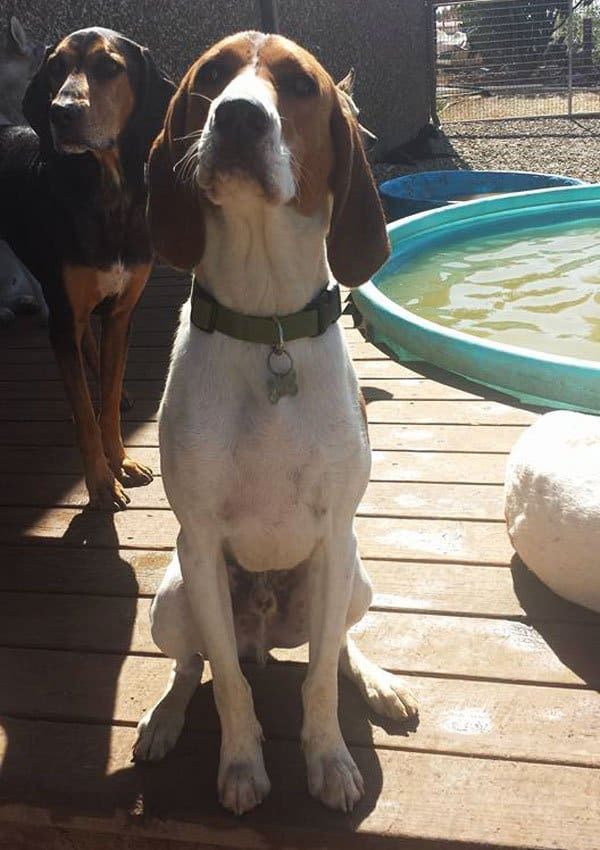
I had a hand in a “rehoming” event recently, and while it’s often framed as a failure when a dog is “given away,” in this case – as in so many – it was absolutely the best thing for the dog, his former owner, and his current owners.
As someone with a strong interest in training, I was confident that I could help Murphy’s owner train him into being a good dog. Murphy is the dog I wrote about in the October issue editorial; he moved into the house where I have my office with a friend who was seeking refuge from a traumatic divorce. Murphy had been rehomed badly several times in his short life already (he was just 10 months old), but this was not a great fit, either.
My friend already had one highly strung dog, and doesn’t have that much experience with training. While she found the Treeing Walker Coonhound to be gorgeous and affectionate, she wasn’t really prepared for a dog with such strong behaviors: he jumped all over people, he pulled on leash, was dramatically reactive to the sight of any other dog on walks, had such terrible manners when he met other dogs that he would invariably get “corrected” by the dog he was being so rude to, and was so aroused by contact with other dogs that he would respond immediately to another dog’s “Hey, back off, pal!” with aggression. He’s also a classic hunting coonhound – prone to “selective hearing” and following his nose off into the wild blue yonder if given the opportunity and in need of a ton of exercise.
He is also very motivated by and interested in humans. So much so that his mild separation anxiety had him pushing through screens and jumping out onto the second story roof of my house when his owner left for a few minutes on an errand (even though there was another dog in the home; as in many cases, the presence of another dog doesn’t usually solve true separation anxiety).
I worked with Murphy, took him out running for miles and miles with my dogs, and showed my friend how to work with him, too. He was making terrific progress: He learned not to jump on people, to ask permission to jump on the couch and to enter and exit through doors (by polite sitting), was already way better on leash, could be called away from the sight of other dogs, and was learning to greet other dogs much more calmly.
But my friend still found him to be overwhelming at times. One day, after a bad walk where everything went wrong, she admitted to me, sobbing, that he was just too much for her to handle and was complicating her life to an unbearable extent. I hadn’t previously heard her express anything other than her wish to make their relationship work out – and maybe she hadn’t said anything like that to me before out of fear of getting judged. But I actually think rehoming can be a HUGE favor to all parties sometimes – especially in a case like this, where the dog and the person are so mismatched (she’s a middle-aged, calm, quiet person, a massage therapist – not someone who enjoys exuberant baying of hounds!). He was likely going to be a trial for her for years – and was never going to be fully appreciated for exactly who he was. The only way he was going to make her happy is if almost everything about him changed, which was bound to be hard on him. They’d both be better off going their separate ways!
Fortunately, I know a GREAT hound rescue group, the American Black and Tan Coonhound Rescue (coonhoundrescue.com) and they were able to take him in. He spent a couple weeks at a dog daycare facility in a large, social group that included a lot of other hounds, and within a couple of weeks, much better socialized to the presence of other dogs, he was adopted by a couple who was looking for a dog exactly like him. Hurrahs all around.






